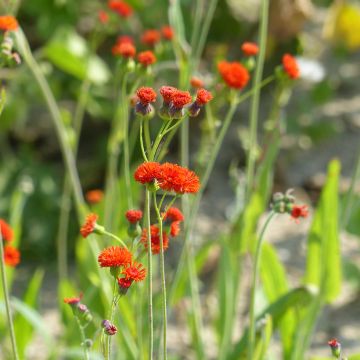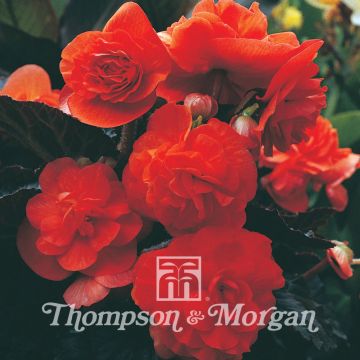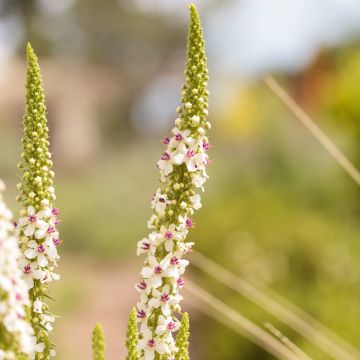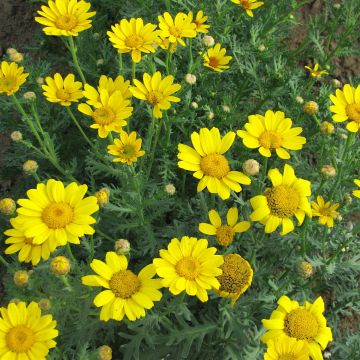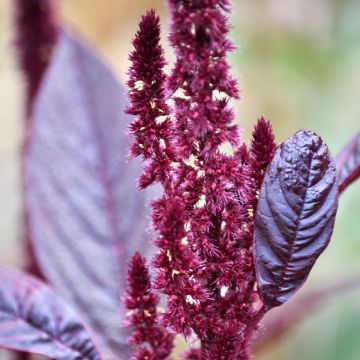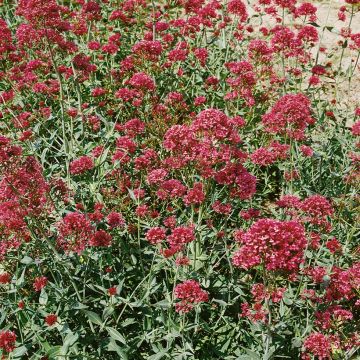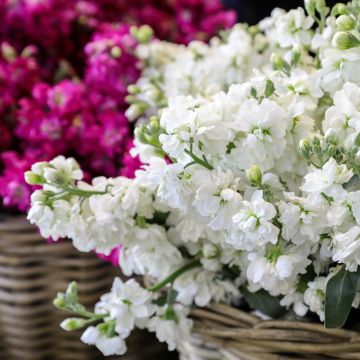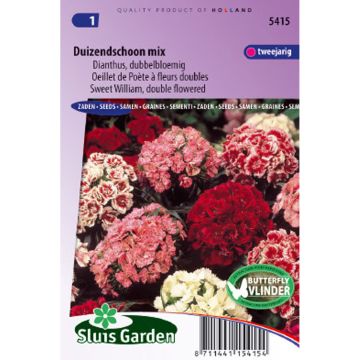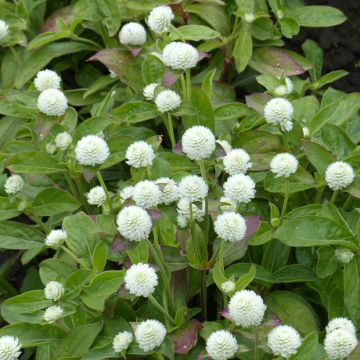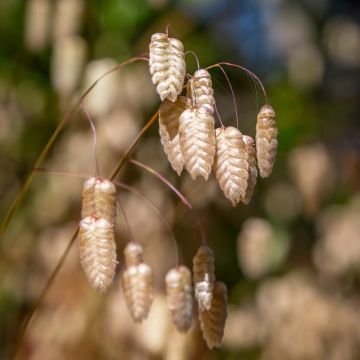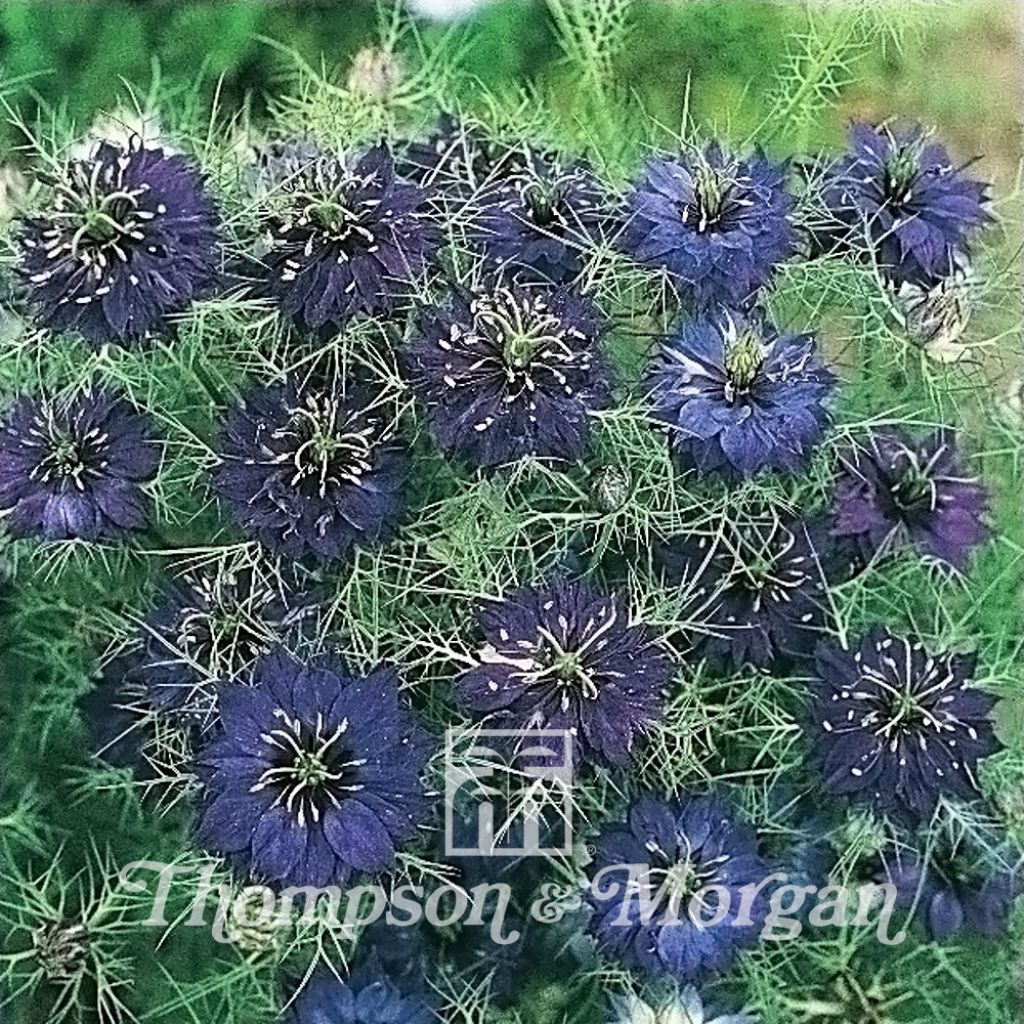

Nigella Damascena Oxford Blue
Nigella damascena Oxford Blue
Nigella damascena Oxford Blue
Love-in-a-mist, Devil in a bush
This plant carries a 6 months recovery warranty
More information
We guarantee the quality of our plants for a full growing cycle, and will replace at our expense any plant that fails to recover under normal climatic and planting conditions.
Seed-only orders are dispatched by sealed envelope. The delivery charge for seed-only orders is €3.90.
Does this plant fit my garden?
Set up your Plantfit profile →
Description
Nigella damascena Oxford Blue is a large, unique and dark variety with large, very double, spectacular flowers in intense midnight blue with a black heart and airy foliage. The delicate flowers then turn into original, round, parchment-like, quite dark capsules, adorned with very fine 'hairs'. You can sow this delightful selection in rockeries or sunny flowerbeds, without fear of disturbing neighbouring plants. It is an excellent flower for bouquets. Everything in this easy-to-grow plant is decorative, foliage, flowers and fruits.
Nigella damascena is an annual plant from the Ranunculaceae family, native to the Middle East, growing in uncultivated, rocky lands and along roadsides in the most inhospitable areas. This very hardy and fast-growing plant overwinters as a seedling to form a beautiful tuft of feathery foliage in spring, reaching 50 cm (20in) high and 30 cm (12in) wide. The Oxford Blue variety stands out for its large size and its large, very double, deep blue flowers with a very dark, almost black throat. Flowering occurs from May to August, depending on the sowing date. Its wonderful, slender petals surrounded by a lace collar are nestled in the foliage. They measure approximately 3 cm (1in) in diameter and are followed by the formation of brown, silky, round capsules with a large number of small black seeds.
Nigella damascena is a favourite of cottage gardens, aptly named 'Love-in-a-Mist' and one of the easiest plants to grow in well-drained soils. It is perfect everywhere: in natural gardens, rockeries and perennial flowerbeds where it lightens up the other blooms. It pairs well with bush roses, quickly fills empty spaces and allows for the creation of a colourful country-style decor with phacelias, Cerinthe major, sainfoin, California poppies, perennial flax, or wild chicory.
Report an error about the product description
Flowering
Foliage
Plant habit
Botanical data
Nigella
damascena
Oxford Blue
Ranunculaceae
Love-in-a-mist, Devil in a bush
Cultivar or hybrid
Other Thompson and Morgan seeds
Planting and care
Sowing Oxford Blue Love-in-a-Mist is easy. You can choose to sow in spring or late summer, as the seedlings are hardy and survive the winter without damage. Sow the seeds outdoors, directly in the soil. Loosen and lighten the soil well before sowing. Sow in spaced rows of 30cm (12in), at a depth of 6mm (0in). You can create beautiful flowering pots for spring by sowing the seeds in a cold greenhouse or conservatory in late summer and autumn. Thin out the seedlings to leave one plant every 20cm (8in). Nigella love-in-a-mist plants love the sun and tolerate drought well, as they adapt their life cycle to the climatic conditions, flowering early in dry summer regions, and throughout the summer in cooler climates. These plants self-seed very easily in the garden, but not always reliably.
Sowing period
Intended location
This item has not been reviewed yet - be the first to leave a review about it.
Flower seeds
Haven't found what you were looking for?
Hardiness is the lowest winter temperature a plant can endure without suffering serious damage or even dying. However, hardiness is affected by location (a sheltered area, such as a patio), protection (winter cover) and soil type (hardiness is improved by well-drained soil).

Photo Sharing Terms & Conditions
In order to encourage gardeners to interact and share their experiences, Promesse de fleurs offers various media enabling content to be uploaded onto its Site - in particular via the ‘Photo sharing’ module.
The User agrees to refrain from:
- Posting any content that is illegal, prejudicial, insulting, racist, inciteful to hatred, revisionist, contrary to public decency, that infringes on privacy or on the privacy rights of third parties, in particular the publicity rights of persons and goods, intellectual property rights, or the right to privacy.
- Submitting content on behalf of a third party;
- Impersonate the identity of a third party and/or publish any personal information about a third party;
In general, the User undertakes to refrain from any unethical behaviour.
All Content (in particular text, comments, files, images, photos, videos, creative works, etc.), which may be subject to property or intellectual property rights, image or other private rights, shall remain the property of the User, subject to the limited rights granted by the terms of the licence granted by Promesse de fleurs as stated below. Users are at liberty to publish or not to publish such Content on the Site, notably via the ‘Photo Sharing’ facility, and accept that this Content shall be made public and freely accessible, notably on the Internet.
Users further acknowledge, undertake to have ,and guarantee that they hold all necessary rights and permissions to publish such material on the Site, in particular with regard to the legislation in force pertaining to any privacy, property, intellectual property, image, or contractual rights, or rights of any other nature. By publishing such Content on the Site, Users acknowledge accepting full liability as publishers of the Content within the meaning of the law, and grant Promesse de fleurs, free of charge, an inclusive, worldwide licence for the said Content for the entire duration of its publication, including all reproduction, representation, up/downloading, displaying, performing, transmission, and storage rights.
Users also grant permission for their name to be linked to the Content and accept that this link may not always be made available.
By engaging in posting material, Users consent to their Content becoming automatically accessible on the Internet, in particular on other sites and/or blogs and/or web pages of the Promesse de fleurs site, including in particular social pages and the Promesse de fleurs catalogue.
Users may secure the removal of entrusted content free of charge by issuing a simple request via our contact form.
The flowering period indicated on our website applies to countries and regions located in USDA zone 8 (France, the United Kingdom, Ireland, the Netherlands, etc.)
It will vary according to where you live:
- In zones 9 to 10 (Italy, Spain, Greece, etc.), flowering will occur about 2 to 4 weeks earlier.
- In zones 6 to 7 (Germany, Poland, Slovenia, and lower mountainous regions), flowering will be delayed by 2 to 3 weeks.
- In zone 5 (Central Europe, Scandinavia), blooming will be delayed by 3 to 5 weeks.
In temperate climates, pruning of spring-flowering shrubs (forsythia, spireas, etc.) should be done just after flowering.
Pruning of summer-flowering shrubs (Indian Lilac, Perovskia, etc.) can be done in winter or spring.
In cold regions as well as with frost-sensitive plants, avoid pruning too early when severe frosts may still occur.
The planting period indicated on our website applies to countries and regions located in USDA zone 8 (France, United Kingdom, Ireland, Netherlands).
It will vary according to where you live:
- In Mediterranean zones (Marseille, Madrid, Milan, etc.), autumn and winter are the best planting periods.
- In continental zones (Strasbourg, Munich, Vienna, etc.), delay planting by 2 to 3 weeks in spring and bring it forward by 2 to 4 weeks in autumn.
- In mountainous regions (the Alps, Pyrenees, Carpathians, etc.), it is best to plant in late spring (May-June) or late summer (August-September).
The harvesting period indicated on our website applies to countries and regions in USDA zone 8 (France, England, Ireland, the Netherlands).
In colder areas (Scandinavia, Poland, Austria...) fruit and vegetable harvests are likely to be delayed by 3-4 weeks.
In warmer areas (Italy, Spain, Greece, etc.), harvesting will probably take place earlier, depending on weather conditions.
The sowing periods indicated on our website apply to countries and regions within USDA Zone 8 (France, UK, Ireland, Netherlands).
In colder areas (Scandinavia, Poland, Austria...), delay any outdoor sowing by 3-4 weeks, or sow under glass.
In warmer climes (Italy, Spain, Greece, etc.), bring outdoor sowing forward by a few weeks.


































